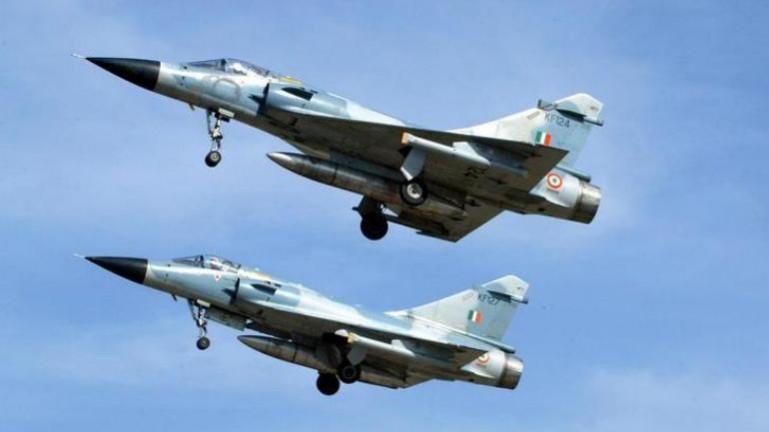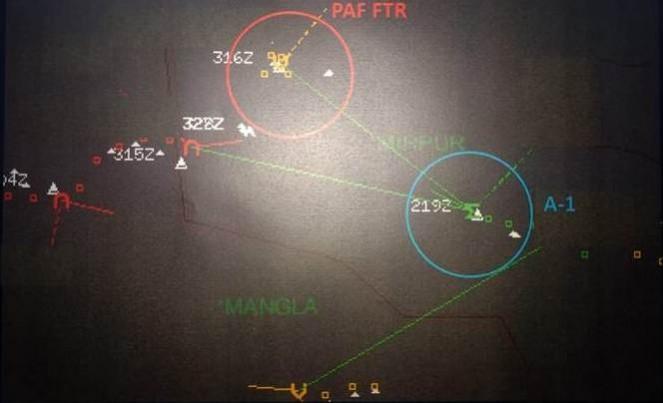
The crash of a Mirage 2000-I fighter jet on February 1 in Bengaluru killing two experienced Indian Air Force (IAF) pilots may have been caused by a glitch that causes the flight computer to take over the controls causing crashes like in the case of two recent accidents involving Boeing 737 MAX airliners, a media report says citing the findings of a court of inquiry (CoI).
IAF successfully deployed Mirage 2000 multirole fighters to target Jaish-e-Mohammed terrorist training camps in Balakot deep inside Pakistan on February 26 killing dozens of terrorists to avenge the Pulwama bombing. Mirage 2000 jets were also deployed successfully in interceptor role on the next day to stop a raiding formation of Pakistan Air Force (PAF) warplanes.
It's in the ensuing dogfight that IAF scored a major hit by shooting down a PAF F-16 before losing a MiG 21 Bison whose pilot Wing Commander Abhinandan Varthaman ejected into the Pakistani side of Kashmir after.
The CoI proceedings show that this may not have been the first case of trouble for Mirage 2000 aircraft from such a glitch after Dassault's flight control software kicked in unexpectedly, a report in the Business Standard says. In the case of such an eventuality, the pilot may lose control of the aircraft resulting in a crash.
Flight computer software anomaly was blamed for two crashes of Boeing 737 MAX passenger aircraft within five months leading to the grounding of all aircraft of that type around the globe. An Ethiopian Airlines Nairobi-bound B737 MAX flight crashed six minutes into takeoff from Addis Ababa killing all the 157 people aboard on March 10, 2019.
This took place even before aviation experts had completed the inquiry into October 29, 2018, an accident of an Indonesian Lion Air B737 MAX aircraft that crashed soon after liftoff from Jakarta en route to Pangkul Pinang killing the 189 people aboard.

The CoI probe reportedly revealed at least four similar incidents in which Mirage 2000 aircraft on midflight suddenly and without the pilot's command jerked their nose towards the ground. The flight computer then spontaneously jerks the nose back upwards, pushing the aircraft into violent jerking movement. The aircraft in these cases continued their jerking movement — termed "pitch oscillations" — for several seconds before resuming normal flight, the report says.
CoI members drawn from the IAF, public sector aircraft maker Hindustan Aeronautics (HAL), design people National Aeronautics Laboratory (NAL) and Aeronautical Development Agency (ADA) believe they have reason to suspect that a similar software effort at course correction may have caused the February 1 crash. They assume that what saved the aircraft in three recorded incidents of such violent "pitch oscillations" was the high altitudes that gave the aircraft enough time to correct itself. But on February 1, the accident took place moments after the lift-off giving no room for course correction causing Mirage 2000 to dive from merely five metres of height and hit the ground to perish in a ball of flame.
The pilots of aircraft involved in earlier incidents were perhaps luckier in that they occurred higher up in the sky giving the aircraft enough room to self-correct itself. The report recounted a 1989 incident in which a Mirage 2000 experienced "sudden and momentary pitch oscillations... (for) a few seconds" at an altitude of 4,500 feet around 16 minutes after take-off. The oscillations exerted a violent force of gravity in the rage of "+10.5g to -6g" triggering the cockpit's red and amber warning lights to glow. In a 1999 incident, another Mirage 2000 aircraft experienced momentary pitch oscillations for a few seconds at 10,500 feet into the sky, generating a force of 11g on the pilots. A few seconds longer exposure to such high gravitational force would have caused most pilots to black out. In 2014, yet another Mirage 2000 experienced "amber failure warning light and sudden pitch oscillations… (for) a few seconds" about 20 minutes after takeoff, at about 11,500 feet, the report says. In all the three cases it's perhaps the altitude that saved the pilots and the aircraft.
Aviation safety experts are unconvinced by the explanations that Dassault has offered for such sudden pitch oscillations. They believe the matter needs to be probed more thoroughly as the flight computers for Mirage 2000 upgrades are manufactured in Dassault plants in France.









!['Had denied Housefull franchise as they wanted me to wear a bikini': Tia Bajpai on turning down bold scripts [Exclusive]](https://data1.ibtimes.co.in/en/full/806605/had-denied-housefull-franchise-they-wanted-me-wear-bikini-tia-bajpai-turning-down-bold.png?w=220&h=138)



